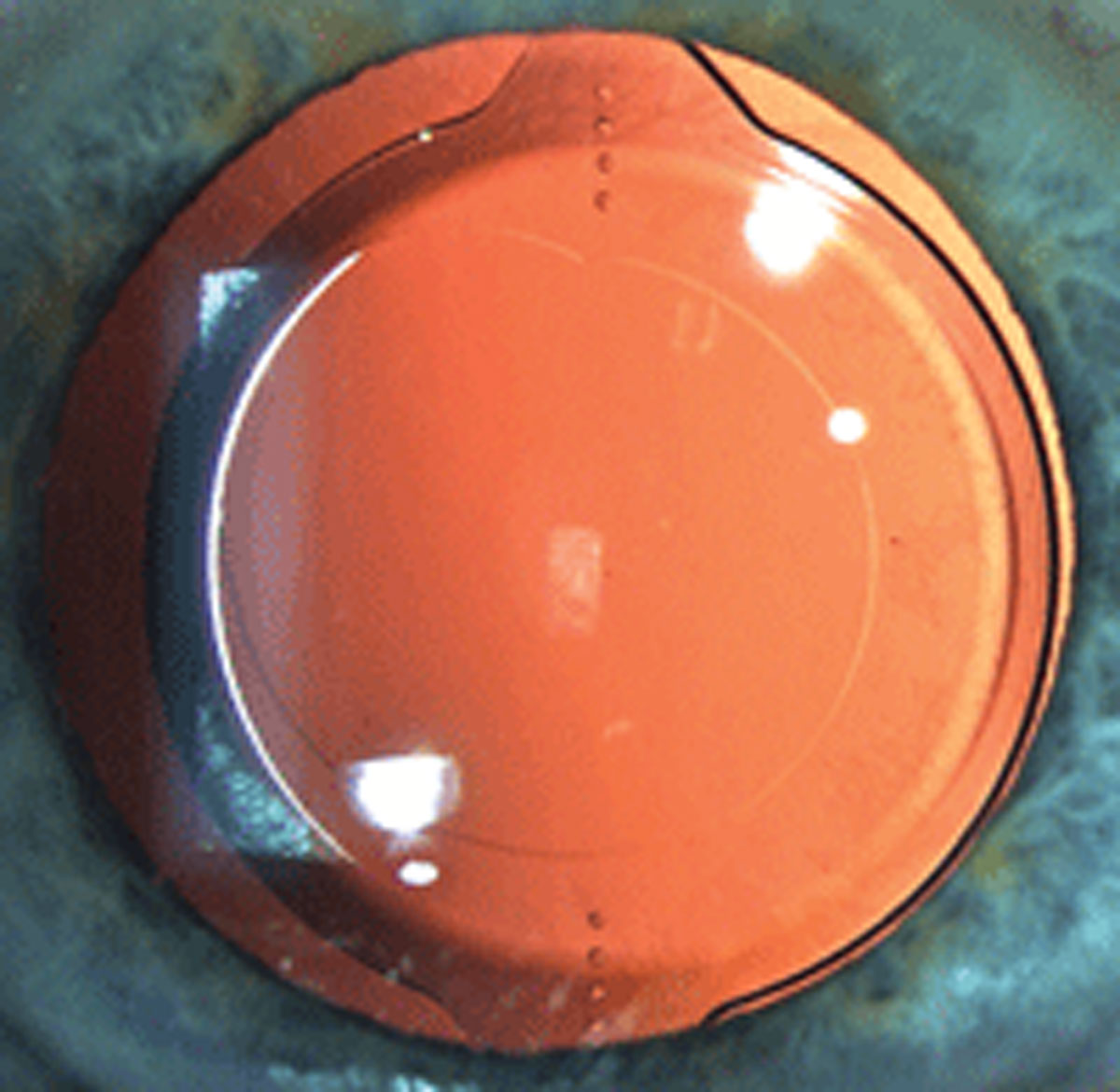 |
| FSAK can safely reduce astigmatism, study finds. Click image to enlarge. |
When considering options to correct regular corneal astigmatism during cataract surgery, a recent study reports that patients implanted with toric intraocular lenses (IOLs) showed better results than individuals who underwent femtosecond laser–assisted arcuate keratotomy (FSAK). Despite the finding, the research team from Spain suggests FSAK is still a safe technique for reducing astigmatism.
Both options had good results in uncorrected distance visual acuity (UDVA) and corrected distance visual acuity (CDVA), in addition to achieving clinically significant reductions in refractive astigmatism compared with pre-op corneal astigmatism levels.
However, three months after surgery, UDVA was significantly higher in the toric IOL group due to better correction of refractive astigmatism, the investigators explained. Additionally, patients with toric IOL implants had a spherical equivalent closer to emmetropia than the FSAK group (-0.54±0.55D).
The study enrolled 75 eyes of 67 patients with age-related cataracts and moderate preoperative corneal astigmatism of 1.25D to 3D. Participants were randomized into toric IOL implant or FSAK groups with symmetrical-paired corneal arcuate keratotomies. Pre-op evaluation included CDVA, corneal topography, autokeratometry and ocular biometry. Postoperative exams were performed at one and three months and included CDVA and UDVA, manifest refraction, autokeratometry and corneal topography.
At three months, residual refractive astigmatism was -0.63±0.55D in the toric IOL group and -0.90±0.53D in the FSAK group. Additionally, this reading was 1.00D or less in 32 toric IOL eyes (84%) and in 25 FSAK eyes (64%).
The researchers also found no major distinctions between the groups in difference vector, angle error, magnitude error or correction index during the three-month follow-up. The index of success was 0.32±0.33D in the toric IOL group and 0.48±0.29D in the FSAK group.
“The use of femtosecond laser technology in cataract surgery has brought with it the possibility of making more precise arcuate incisions as it enables control of parameters such as cutting depth, arc length and optical area diameter, which in manual techniques are influenced by the human factor,” the authors wrote in their paper.
Nevertheless, the findings demonstrate that toric IOL implants remain a superior choice for correcting moderate astigmatism due to their stability over time, producing results that are more predictable and less influenced by the biomechanical characteristics of the cornea and its healing, they added.
“Ongoing advances in femtosecond laser-assisted cataract surgery, together with the creation and optimization of specific nomograms for this technique, will minimize the uncertainty that incisional surgery to correct astigmatism currently entails,” the authors wrote.
Hernandez R, Almenara C, Soriano D, et al. Toric intraocular lens implantation vs. femtosecond laser-assisted arcuate keratotomy for correction of moderate astigmatism in cataract surgery. J Cataract Refract Surgery. December 21, 2021. [Epub ahead of print]. |

